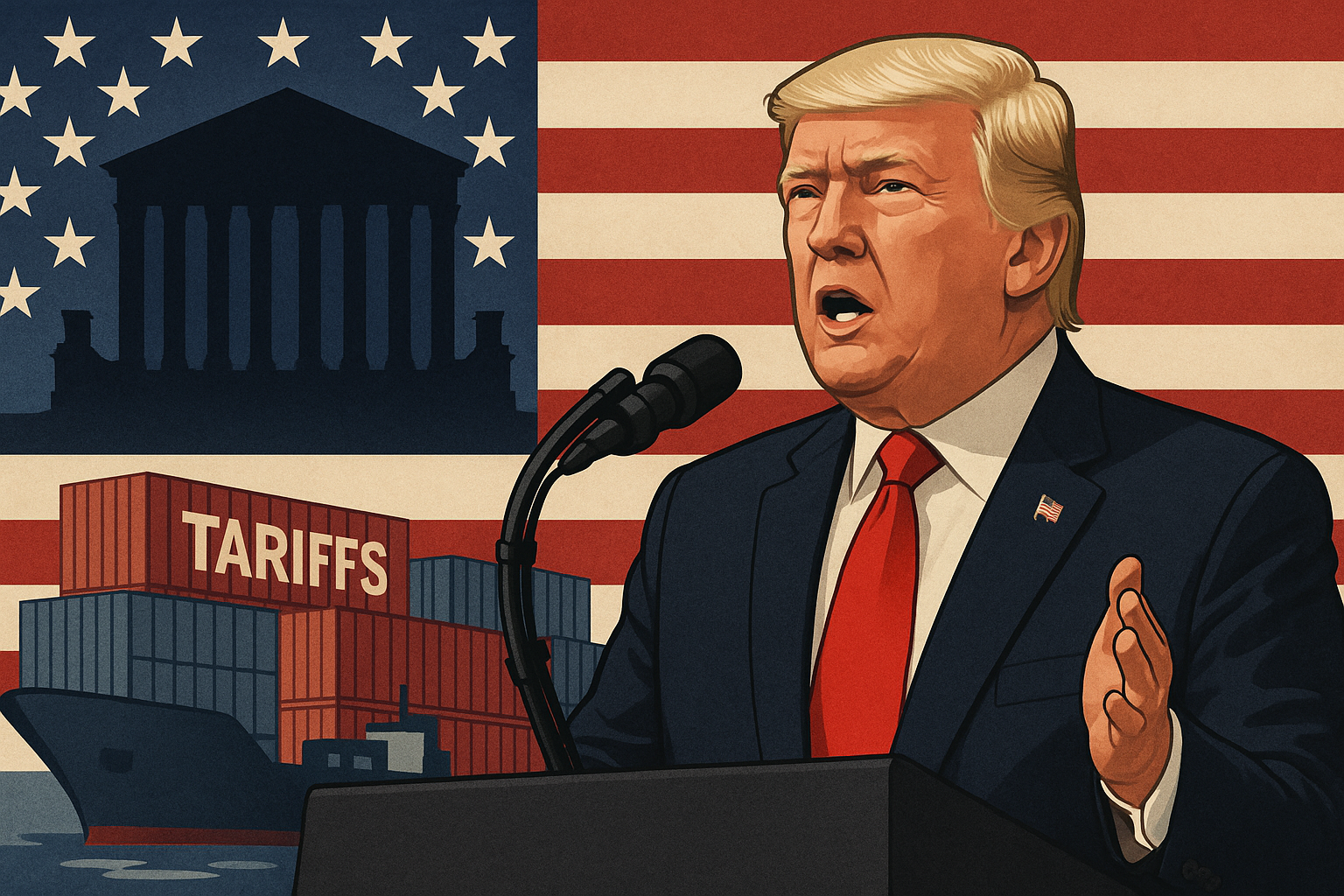Donald Trump has placed tariffs at the center of his trade policy. Now, those tariffs face their toughest test yet. A federal appeals court ruled that the former president overstepped his authority by using emergency powers to impose sweeping import taxes. Judges said the 1977 International Emergency Economic Powers Act does not give the president the right to levy tariffs, which the Constitution reserves for Congress. Trump quickly announced he would appeal to the Supreme Court and called the case an “economic emergency.” He warned that if the ruling stands, the United States may be forced to unwind existing trade deals, disrupting ties with Europe, Japan, South Korea, Canada, and Mexico.
Tariffs, Treasury, and Global Risks
The financial stakes are enormous. According to Bloomberg Economics, a defeat would slash America’s average tariff rate by half and force the government to refund tens of billions of dollars. That scenario would shake negotiations with allies and threaten preliminary trade deals already in place. Treasury Secretary Scott Bessent insists the Supreme Court will back Trump, but he admitted the administration is working on backup options. In his view, the appeals court ruling “gravely undermines the president’s ability to conduct diplomacy” and protect U.S. national security. If the justices rule against Trump, the treasury may face the difficult task of managing refunds, restructuring trade flows, and recalibrating revenue forecasts.
Canada, Mexico, and the Scope of the Case
Canada and Mexico stand at the heart of the dispute. Trump’s contested tariffs cover not only steel and aluminum but also broader import categories tied to fentanyl trafficking. Mexico has protested the measures, while Canada has raised concerns about damage to its exporters. Both countries argue that the tariffs risk destabilizing cross-border supply chains. The United States-Mexico-Canada Agreement (USMCA) was designed to bring stability to North American trade, but this court battle casts a shadow over its effectiveness. If tariffs fall, it could ease pressure on Canadian and Mexican industries. But if the Supreme Court sides with Trump, it could embolden Washington to push even harder on its closest neighbors.
Tariffs and the Constitution
At the core of the case lies a constitutional debate. Congress, not the president, holds the power to impose taxes and tariffs. The appeals court ruled that Trump’s reliance on emergency powers stretched the law too far. Yet the administration argues that the power to “regulate importation” includes the authority to set tariffs. A ruling in Trump’s favor would expand presidential authority over trade in ways unseen in modern history. Critics warn this would give future presidents nearly unlimited power to declare emergencies and impose new tariffs without congressional approval. The court’s decision will likely set a precedent that shapes U.S. trade law for decades.
What Comes Next in Court and Markets
The Supreme Court has been asked to take up the case on a fast track, with arguments in early November and a decision by year’s end. If the justices agree, the ruling could arrive just as global trade tensions flare again. Markets will be watching closely. A decision against Trump could lower costs for importers and provide relief to small businesses hit by the tariffs. But it could also create turmoil if the treasury must refund hundreds of billions of dollars while unwinding existing deals. On the other hand, a ruling for Trump could solidify tariffs as a permanent tool of economic pressure on Canada, Mexico, and other partners. Either way, the court’s decision will echo far beyond Washington, reshaping the balance of power in global trade.
